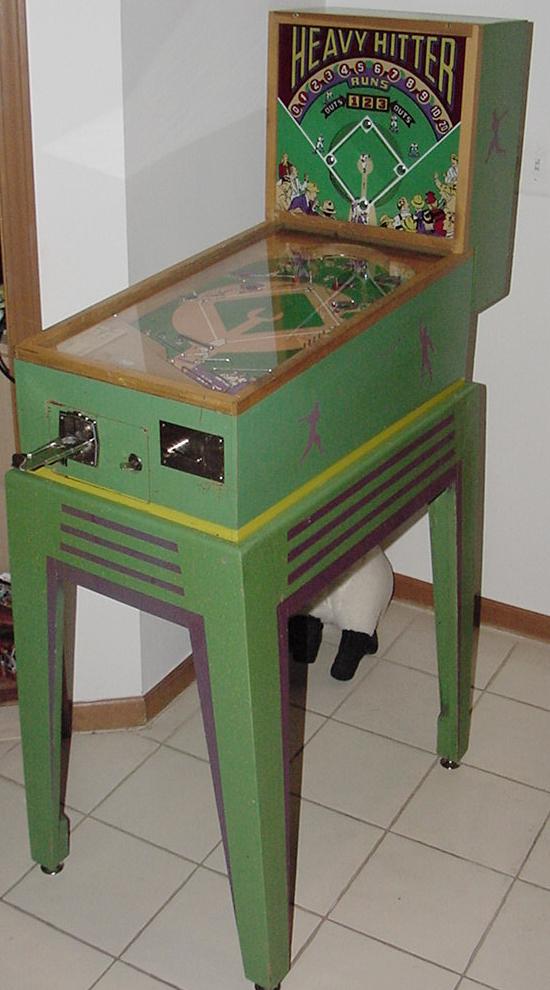
|
Description: Heavy Hitter, Bally #488, 5/47 (introduction date), made until summer of 1949 (this game was very popular), one player. Small pitch and bat, 32.5" long by 15" wide by 55" tall with the floor stand. Backglass running man unit uses five 5/8" steel balls. and one 5/8" ball for the playfield. Top glass size is 26" x 14" x 3/16". Heavy Hitter was either a countertop game, or a floor game (using its metal stand, though for the first month of production, Heavy Hitter had a *wood* floor stand). The stand seems to be missing on many of the Heavy Hitters today, which is quite a shame as countertop games today are not popular. Not to be confused with the much larger (and not nearly as fun) 1958/1959 Bally Heavy Hitter. If you have this game for sale please contact me at cfh@provide.net Despite its small size (15" x 27" footprint), the 1947-1949 Bally Heavy Hitter is a *great* game in my opinion (though at first I must admit I underestimated the game, due largely to its small size). It's fun because of its very fast play. The pitched ball is done automatically and quickly by the game, not by a player pressing a button to pitch (unlike the later 1950s Williams pitch and bats). The bat is powerful, and can really kick the ball up the playfield (it is common for the ball to bounce and hit the top glass). There are two reostats inside the game to adjust the pitching power and bat power. Heavy Hitter also has an vertical running man unit in the backbox. One of five 5/8" steel ball moves from base to base as a hit is generated. When a ball moves from third base to home, the ball closes a switch, which generates a run on the lighted score backglass. The single 5/8" ball on the playfield goes into the hole scoring playfield registering the hit or an out. The game does not allow for multiple inning; three outs and the game is over. Heavy Hitter was the first game to use the (1950s and later "standard") pitching flap and ball delivery. This used a mechanism to pitch the ball out from underneath the playfield, using a .008" thick spring steel flap to hide the playfield ball slot when the ball was on top of the playfield. This idea was invented and patented in 1946 by a Royal Oak, Michigan cab driver (Jimmy Keller), and he sold the invention to Bally. Similar to Gottlieb's 1951 Bush League and United's 1948 Tenth Inning. Want to see of movie of the game in play? Click here. |
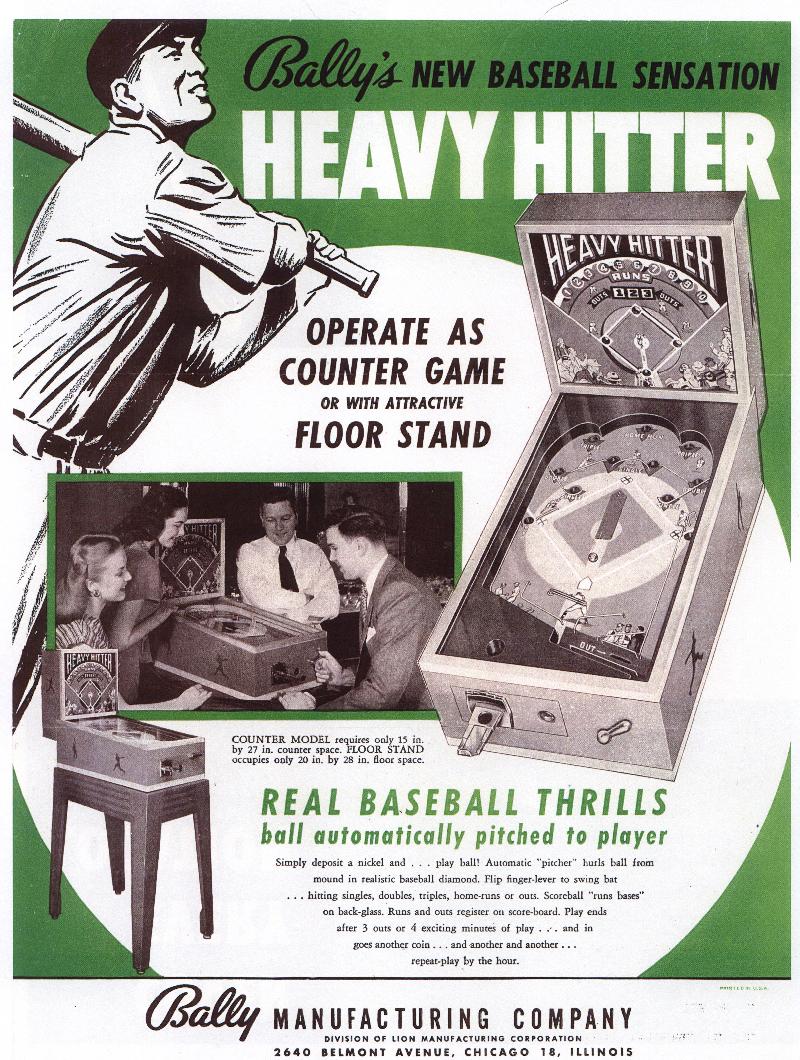
The Author's 6/47 Bally Heavy Hitter, with the very rare *wood* stand:

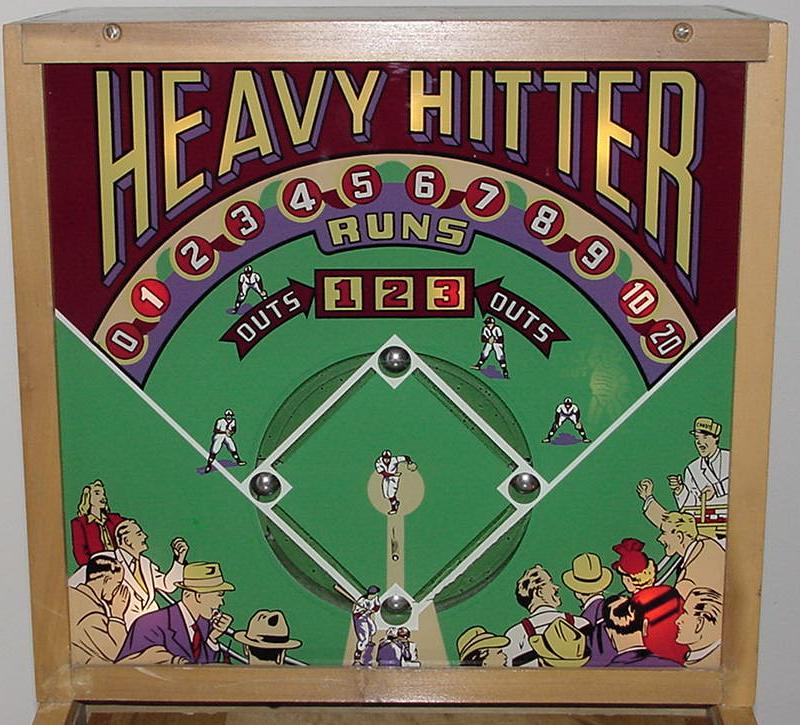
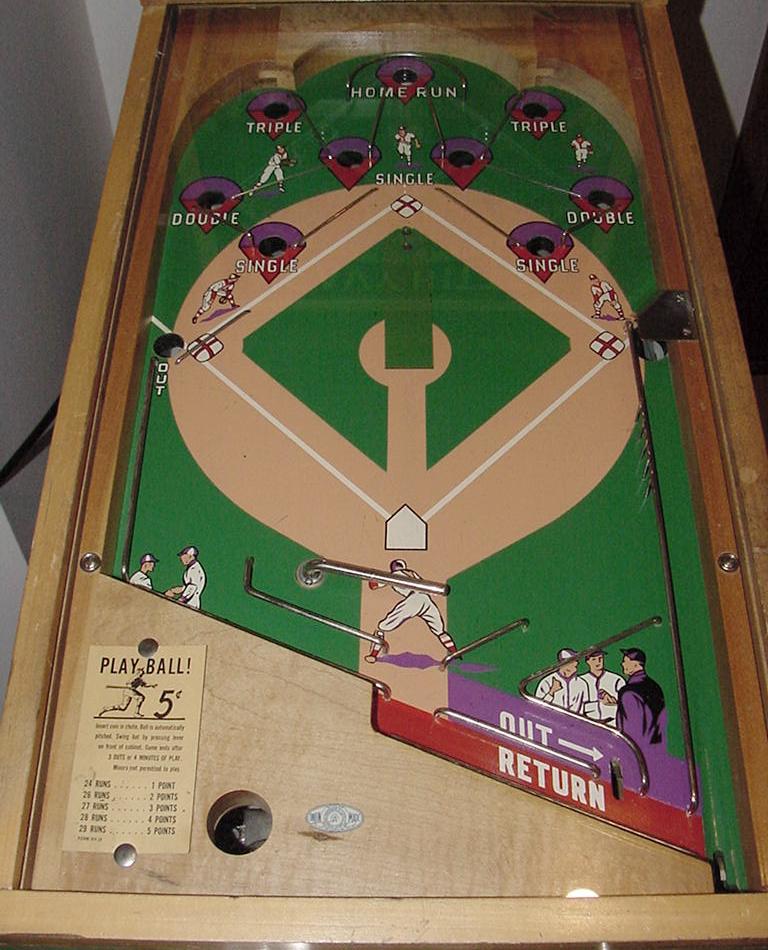
Another 1947 Heavy Hitter with the rare wooden floor stand:
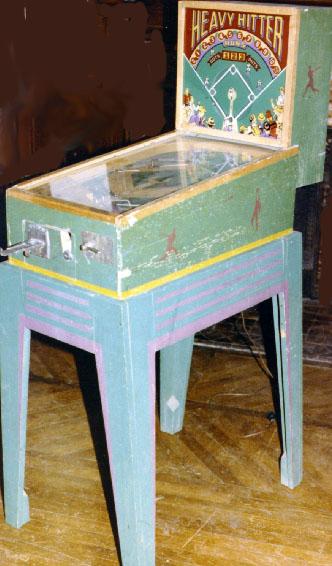
|
* Email the collector cfh@provide.net * Go to the CoinOp Baseball History index * Go to the Pinball Repair/History index |